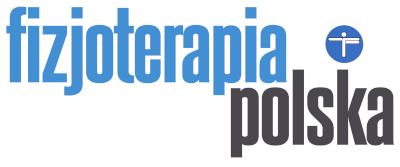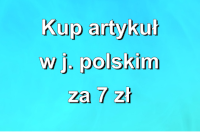The neurorehabilitation of hemispatial neglect in patients with traumatic brain injury
Maria Pąchalska, Bogusław Frańczuk, Jan Talar, Wiesław Tomaszewski, Bruce MacQueen, Kay Neldon
Maria Pąchalska, Bogusław Frańczuk, Jan Talar, Wiesław Tomaszewski, Bruce MacQueen, Kay Neldon – The neurorehabilitation of hemispatial neglect in patients with traumatic brain injury. Fizjoterapia Polska 2001; 1(2); 143-154
Abstract
Background. The purpose of this article is to evaluate the relative effectiveness of differentiated rehabilitation programs for patients with hemispatial neglect subsequent to traumatic brain injury (TBI). In the literature, neglect is classified into two basic types: egocentric (“body-centered”), in which the patient neglect object situated in a given area of his field of vision, and allocentric )”objected-focused”), in which the patient neglects one side of objects presented to him, regardless of their location. The authors’ clinical practice indicates that the visual scanning technique traditionally used in neglect therapy is generally ineffective in patients with egocentric neglect. A spatio-motor training program has therefore been developed by the authors, elaborated on the basic of their program of semantically controlled motion patterns for the rehabilitation of apraxia, whose goal is to reestablish the proper relations between automatic and voluntary movements, to improve interhemisphere cooperation by symmetrical and asymmetrical modeling of motor exercises with both healthy and affected limbs, and to increase patient motivation by establishing clearcut goals and rewarding success. Both programs, visual scanning and spatio-motor training, have been implemented in clinical practice in the represented by the authors. Material and methods. The article describes in detail the rehabilitation of two TBI patients (JK, male, age 27, and AS, female, age 28) treated by the authors in the chronic phase of recovery after automobile accidents, as a result of which both patients were comatose for more than 4 weeks. In neuropsychological testing JK and AS both presented with persistent and significant leftsided hemispatial neglect: allocentric neglect in JK, and egocentric in AS. A modified AB-BA experimental design was used, where A represents spatio-motor training, and B is visual scanning. For patient JK, program A was first applied, followed by B, while for patient AS the reverse sequence was used. Each program included 10 therapy sessions, with a four-week interval between programs. The degree of neglect was measured using standard neuropsychological tests for quantitative and qualitative assessment of neglect, along with the analysis of drawings made during therapy by both patients. The patients were tested four times, before and after each of the two programs. Results. As the authors had hypothesized, patient JK did not show any progress in terms of neglect after conclusion of program A, while after program B he showed virtually no lingering neglect. In the case of patient AS the results were exactly opposite: after concluding program B (which she received first) there was no significant change, while after program A (administered second) there were no signs of neglect.Conclusion. The theoretical and clinical implications of these results for neuropsychological practice are discussed, and a model solution is proposed to explain the basic pathomechanism of both allocentric and egocentric neglect. These two types of neglect are sufficiently different in etiology and symptomatology to necessitate differentiated therapy programs in the course of neurorehabilitation.
Key words:
hemispatial neglect, traumatic brain injury, rehabilitation
| Invalid download ID. | Pobierz bezpłatnie artykuł w j. angielskim |


